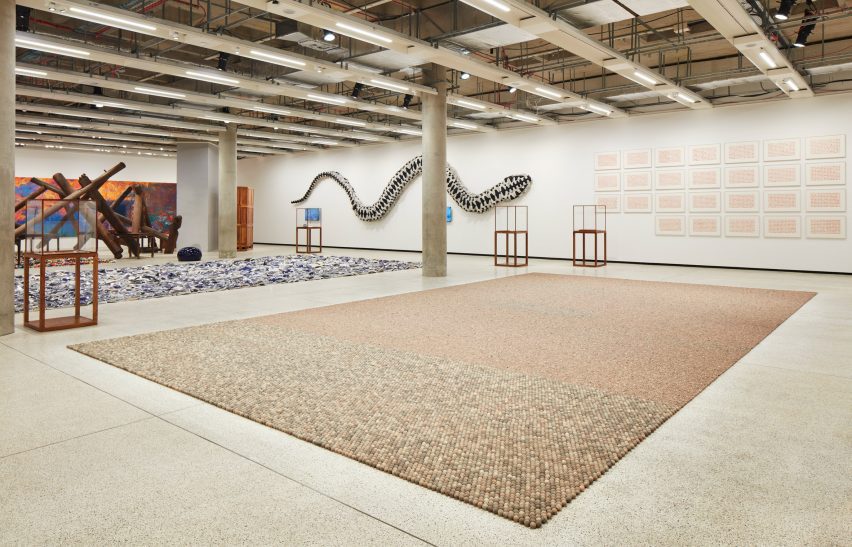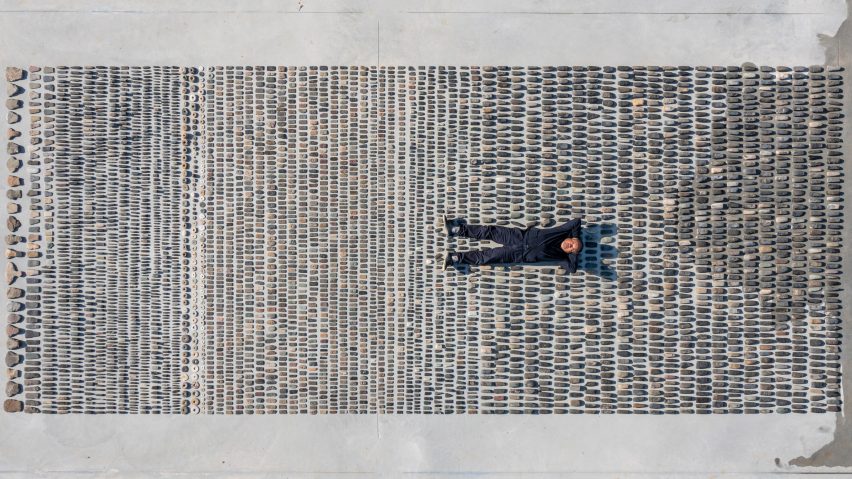Last Month, in London’s Design Museum, renowned Chinese artist Ai Weiwei presented his first design-focused exhibition, “Making Sense”, which combines history, activism, and artistic expression in a remarkable fusion. This groundbreaking exhibition presents a wide range of new and historic works that reflect Ai Weiwei’s unique perspective on life’s resilience in the aftermath of the pandemic.
Ai Weiwei, who is renowned throughout the world for using art as a means of protest, created “Making Sense” as a celebration of life’s continuity and the human spirit’s resilience.

This exhibition features “field works” made from artifacts that the artist has been gathering since the 1990s, arranged in a rectilinear pattern. Another work is an installation that consists of over 200,000 Xing-ware porcelain cannonballs made during China’s Song dynasty that used to be weapons.
The artist claims his works are to preserve memory and attempt to develop oneself with what has occurred to other people in very radically diverse moments throughout history.

Another of Ai’s works is Spouts, which is made up of thousands of antique porcelain teapot spouts. These pieces were from Left Right Studio Material, which gathers pieces of Ai’s sculptures that were destroyed by the Chinese state when it destroyed the artist’s Beijing studio without warning in 2018.
In an exclusive interview with Dezeen, the artist asserts that “Every object, if it can be recognized or has a name or a definition, is a political work.” “Because of our judgment about values, even daring to name anything is a political act.”
The source of an artwork’s political energy comes not only from the object itself but rather from the observer, whose interpretation is shaped by their particular lived experience. Every observer has different perspectives, Ai clarifies. Someone from London might interpret something differently than someone from Asia or Africa.
Through his previous projects, such as installing three cage-like structures in New York City in protest against then-president Donald Trump’s strict border-control measures and creating a wall of 2,000 life jackets in Québec that were worn by Syrian refugees attempting to cross the Mediterranean Sea, Ai Weiwei’s art explores the voices of the disadvantaged.
For Ai, the creative process is more important than the finished output since it allows for self-evaluation and reflection. “The process itself is to recognize yourself and to make judgments about your approach.”
Considering the value of creativity, he acknowledges that the term “artist” might be diluted by market forces, but for him, everyone has an innate talent for creativity.
Ai Weiwei believes art’s communal benefit of using it as a form of self-expression is an important component of humanity that should never be overlooked.
Ai’s legacy as an artist and activist stands as a tribute to the enduring power of artistic expression to transform how we view art, objects, and the world around us.

